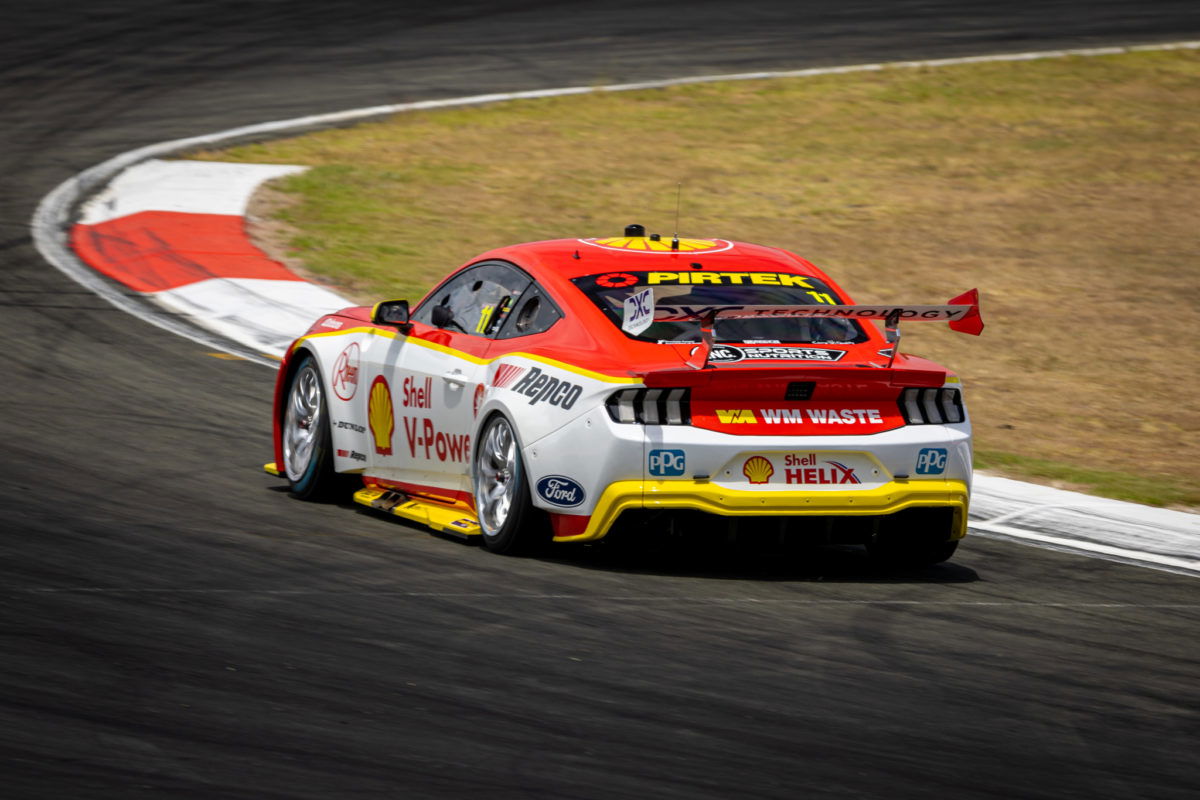

The aerodynamics of the Gen3 Ford Mustang will tweaked following a parity review, Supercars has announced.
According to a statement from the championship, the review determined that there was “a minor difference in rear downforce of the Mustang and its performance in the braking zone” following a “multi-lap overlay”.
The upshot is a modification of the position, span, and angle of the rear wing, and increase in the size of the boot spoiler on the Mustang, broadly in line with Speedcafe predictions.
Supercars CEO Shane Howard said, “Firstly, we would like to thank the Homologation Teams and D2H for their extensive work on this review.
“It required a considerable amount of man hours, expert analysis, and communication to work together to present these adjustments for approval.
“With these changes in place, Supercars is looking forward to racing at this weekend’s NTI Townsville 500.”
As previously reported by Speedcafe, it was said that the traits of the Mustang were deficient relative to those of the Chevrolet Camaro under braking.
That is consistent with Supercars’ announcement this evening, which explains via its statement, “The review determined that parity had been established during Vehicle Control Aerodynamic Testing (VCAT) based on agreed-upon ride heights and a performance window.
“However, it was discovered that the actual performance window slightly varied under braking conditions.
“Therefore, the outlined adjustments aim to bring the aerodynamic performance of the two Supercars closer together.”
The parity review was announced in the days following another Camaro-dominated event at Hidden Valley, and a furious response from the Ford camp.
As first revealed by Speedcafe, the review involved not only CFD work, but also race track validation performed by Tickford Racing’s Cameron Waters at Winton and one of homologation team Dick Johnson Racing’s drivers (presumably Will Davison) at Queensland Raceway last week.
The review was a collaborative effort between DJR, Chevrolet counterpart Triple Eight Race Engineering, Supercars’ Motorsport department (headed up by Adrian Burgess), and United Kingdom-based D2H Advanced Technologies, the latter of which performed the CFD work.
While aerodynamics are likely to be settled now, there remains a question mark over engine/powertrain performance, with suggestions that the Mustang is on the wrong end of a transient disparity.
For the time being, a shift cut discrepancy has been installed between the Ford and Chevrolet engines as an interim parity measure, pending transient dynamometer testing and the arrival of torque sensors which have been ordered from the United States.
Speedcafe understands that the Ford shift cut was a two-stage setting last time out at Hidden Valley, with a standard 50ms cut in the lower gears and a 30ms cut for upshifts to fourth, fifth, and sixth.
The Chevrolet shift cut remains 105ms, as has been the case since the official pre-season test.
It is believed that the aforementioned aerodynamic tweaks will be implemented in time for this weekend’s NTI Townsville 500, practice for which starts on Friday.




















Discussion about this post